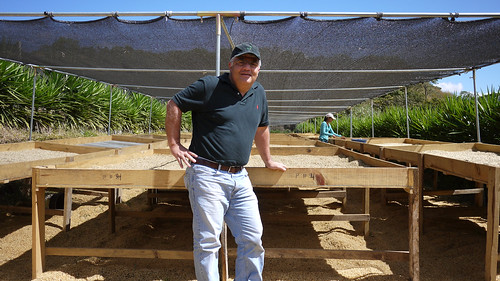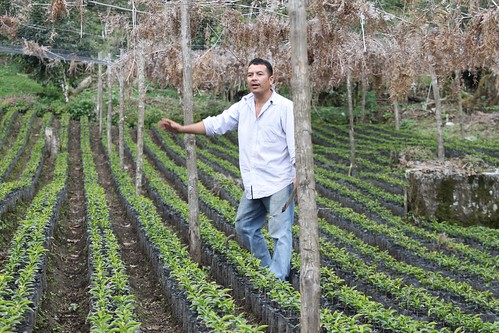I have spent the last 10 days in Central America, visiting Gilberto at Los Pirineos in El Salvador, Marysabel, Moises and Fabio and their farms in Marcala, as well as Jobneel at Nacimiento in Honduras. The purpose of the trip was to make sure the coffees we buy are harvested, processed and dried up to our standards. We have been struggling with fading coffees from this region in the past, and therefore I decided that 2013 will be the year where we put an end to past crop coffees at TW. ( Although we always purchase coffees that are in season, it does not guarantee recieving coffees without “woody” flavours.)
Of course, I have had a dialogue with the mentioned farmers throughout 2012 and I have been visiting them many times in the past. The difference this year is that I am finally seeing the results of all these visits. It does take some time and experience to get to know the individual farms and their challenges, but after conducting several experiments at Finca Tamana in Colombia, as well as experimenting at other farms for the past 5 years I am now certain that our methods work well in order to maintain the quality of the coffee.

Gilberto had already installed new raised beds covered with shade (above picture) in order to dry coffees for TW. Marysabel and Moises had expanded their drying facilities in order to supply our demand for shade dried coffees. The only farmer left was Jobneel, who fortunately had decided not to build the planned cement patio by his house and instead use his money on fertilizing and controlling the leaf rust fungus at his farm. A very good investment indeed, because without any coffee on the trees, there will be no coffee to dry.
Jobneel was a bit sad to tell me that he had failed to build a patio as he had ran out of money. I decided immediately that I would support him with the money to build raised beds, covered with shade, if he promised to build them straight away and to dry all the coffees for TW according to our instructions. I told him that I am simply not going to accept coffees dried on cement patios anymore. Jobneel understood, and we both agreed that it was best to build a new construction in metal so that it will last longer.
It might not be the right way in many peoples minds to cough up money for a farmer to build drying tables. Even Jobneel was a bit embarrassed to accept the money. I understand that it is better to give a good price for the coffee and make Jobneel put his own money in to building infrastructure. As a matter of fact, Jobneel has been able to build a house, buy a car and plant a lot more land with coffee because of the extra money we pay for his quality coffee. I see it as an investment in our quality control, as this is one of the most important steps to make sure our coffees taste great. So I have no regrets helping out with the construction of these tables.
It has been very exciting to see that all the above farmers are now picking fully ripe coffees, sorting them before processing, washing the coffees with great skill, drying the coffee on raised beds in shade (no more dirty patios), storing the parchment in Grain Pro bags and getting the coffees shipped as soon as possible. I will be following up with a visit in April in order to make sure everything has been done according to our standards. The farmers have promised to send photos of the harvest and drying, but I am certain they will do a fantastic job as always.
It is really rewarding to know that all of our coffees are now dried on raised beds, and most of them are dried in shade. This method is really slow, but maintains the quality of the coffee for a much longer time as the coffee is not over heated. Over heating will break the cell structure of the beans and the fats in the beans then go rancid a lot faster, creating the woody “past crop” flavour. If you want to learn more about drying and processing, I suggest you take a look at my lecture at the 2012 Nordic Barista Cup.

